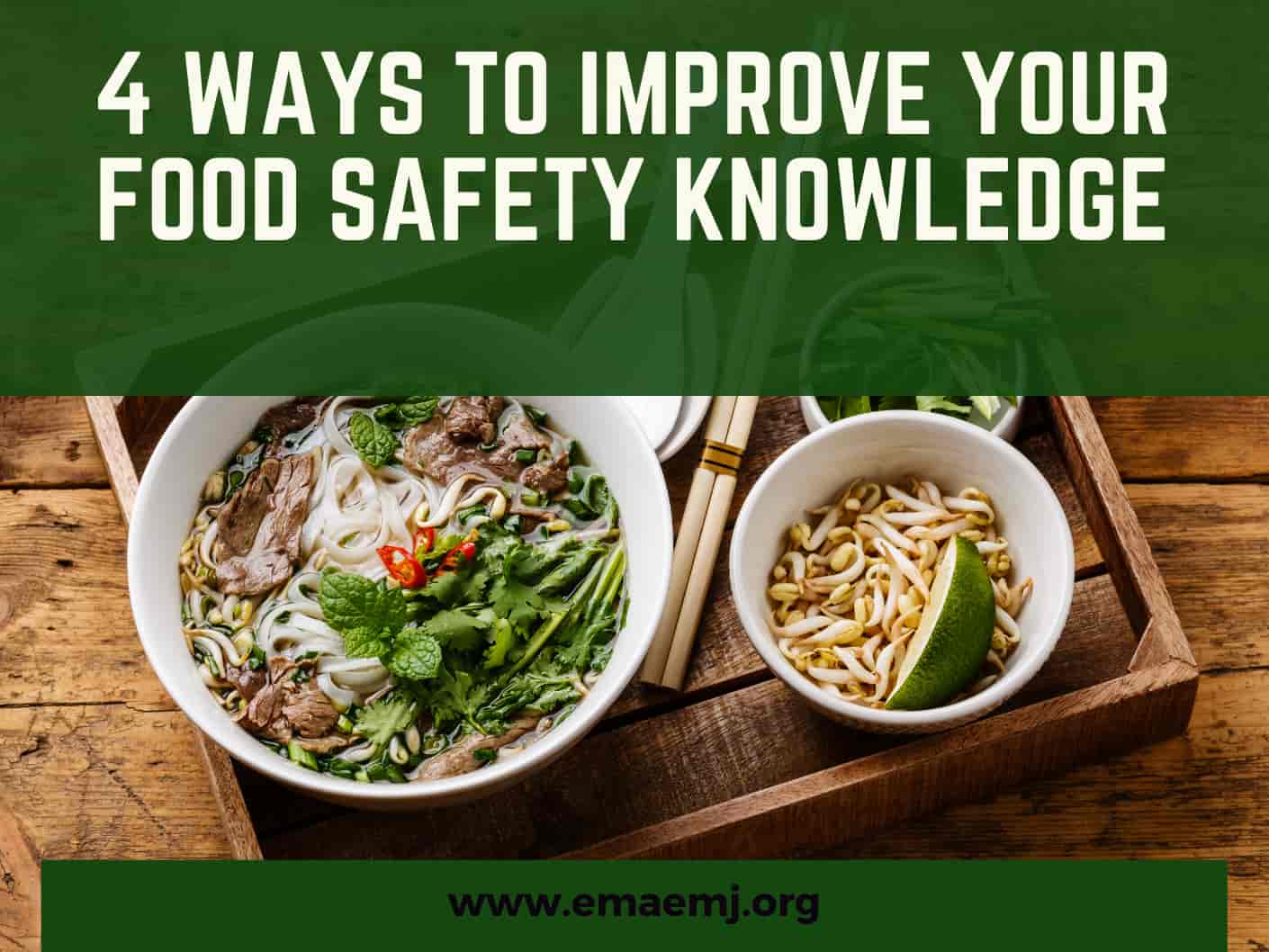This article covers the four main aspects of food safety and how to improve your knowledge and understanding of each.
Food safety is a complex field, which may seem daunting to the casual observer. Four key food safety topics should be understood by anyone working in food or drink preparation, and each will be looked at in turn: contamination, pathogen control, regulation, and induction. Each aspect will have a simple explanation and advice on how to learn more about each one.
Related:
- How Long Does Food Poisoning Symptoms Take To Start
- Following The Food Safety Guidelines is: Clean, Separate, Cook, Chill
- How Can Pathogens Grow Well Between Which Temperatures?
Food safety, as you know, is essential in the foodservice industry. As an owner or manager, you can trust your employees to follow safety rules, but you must ensure they are following the rules correctly and consistently.
We’ve provided four main areas that you’ll need to focus on regarding food safety knowledge.
Food Safety Knowledge
Food Handler Hygiene
The practice of food hygiene or food safety ensures that food is safe to consume. Many hazards can make people sick from eating foods that are not kept at the proper temperature, handled with contaminated hands, stored in unsanitary conditions, or allowed to mold or rot.
Food safety practices include:
- Good personal hygiene – washing hands, wearing clean clothes, and not being around others who are ill.
- Keeping kitchen and food preparation areas clean
- Proper cooking and refrigeration of foods to kill germs
- Proper storage of leftovers
- Separating raw meat and poultry from other foods in grocery shopping, preparation, storage, and serving
- To prevent contamination from other foods, store food properly at home, at the workplace, and when traveling. Proper disposal of garbage, including vegetable matter and other organic materials
In the United States, it is estimated that about one in six people get sick from something they eat every year. Foodborne diseases cause an estimated 76 million illnesses each year in the United States alone. Of these illnesses, 9% require hospitalization, and 30% result in long-term disability. The CDC estimates that approximately 3,000 Americans die each year as a result of consuming contaminated food. As well as having a direct impact on human health, contaminated food costs the economy billions of dollars annually.
Safe Food Storage
Food poisoning is not uncommon, resulting in severe illness, even death. Therefore, it is essential to learn the basics of safe food handling to reduce getting sick.
How to Keep Your Food Safe
The way you store your food will affect its safety and shelf life. If food is stored at too high a temperature, bacteria can multiply and cause food poisoning. Bacteria can also be spread if food is not properly refrigerated or cooked thoroughly.
The three main ways to keep your food safe are:
- Keep cold things cold (0-5 degrees C)
- Preserve hot things hot (65-70 degrees C)
- Keep dry things dry (40-60% relative humidity)
Food Safety Management Systems
Food safety management systems are established to provide a common approach to controlling food safety hazards in food businesses. The Food Standards Agency has developed the following codes of practice for food business operators:
- Code of Practice for the Hygienic Production of Meat Products
- Some code of Practice for the Hygienic Production of Fish and Fishery Products
- Code of Practice for the Hygienic Retail of Shellfish
These codes are intended to give practical advice on good food hygiene practices. They do not cover all aspects of food hygiene but have been written to provide practical advice applicable in most situations. Firms must understand their responsibilities, and this code is designed to help them achieve these.
Food Safety “In Touch”
This is the time of year when we have lots of company. We go to football games, school events, and cookouts—all places where food safety is important. Foodborne illnesses can be caused by bacteria, viruses, and parasites that live in food or on surfaces that contact food. That’s why it’s important to follow four steps to help keep you and your family safe. Do this before and after touching food.
First: Wash hands with soap and water for 20 seconds.
Second: Wash cutting boards, dishes, utensils, counters, and other surfaces that touch food after touching raw meat, poultry, or seafood.
Third: Separate cooked foods from raw foods.
Fourth: Keep hot foods hot and cold foods cold.
It is also important to throw out any leftovers within two hours or sooner if the food has been above 70°F for more than two hours; keep hot food hot (above 140°F) and cold food cold (below 40°F).
Final Words – Food Safety Knowledge
To summarize, good food safety is a shared responsibility. This responsibility applies to the farmers and producers and the contractors and suppliers, transporters, retailers, market and food stall managers, consumers, and ultimately the authorities responsible for ensuring this system works. Through communication and knowledge dissemination, everyone can improve their understanding of food safety and prevent food-borne illness.
